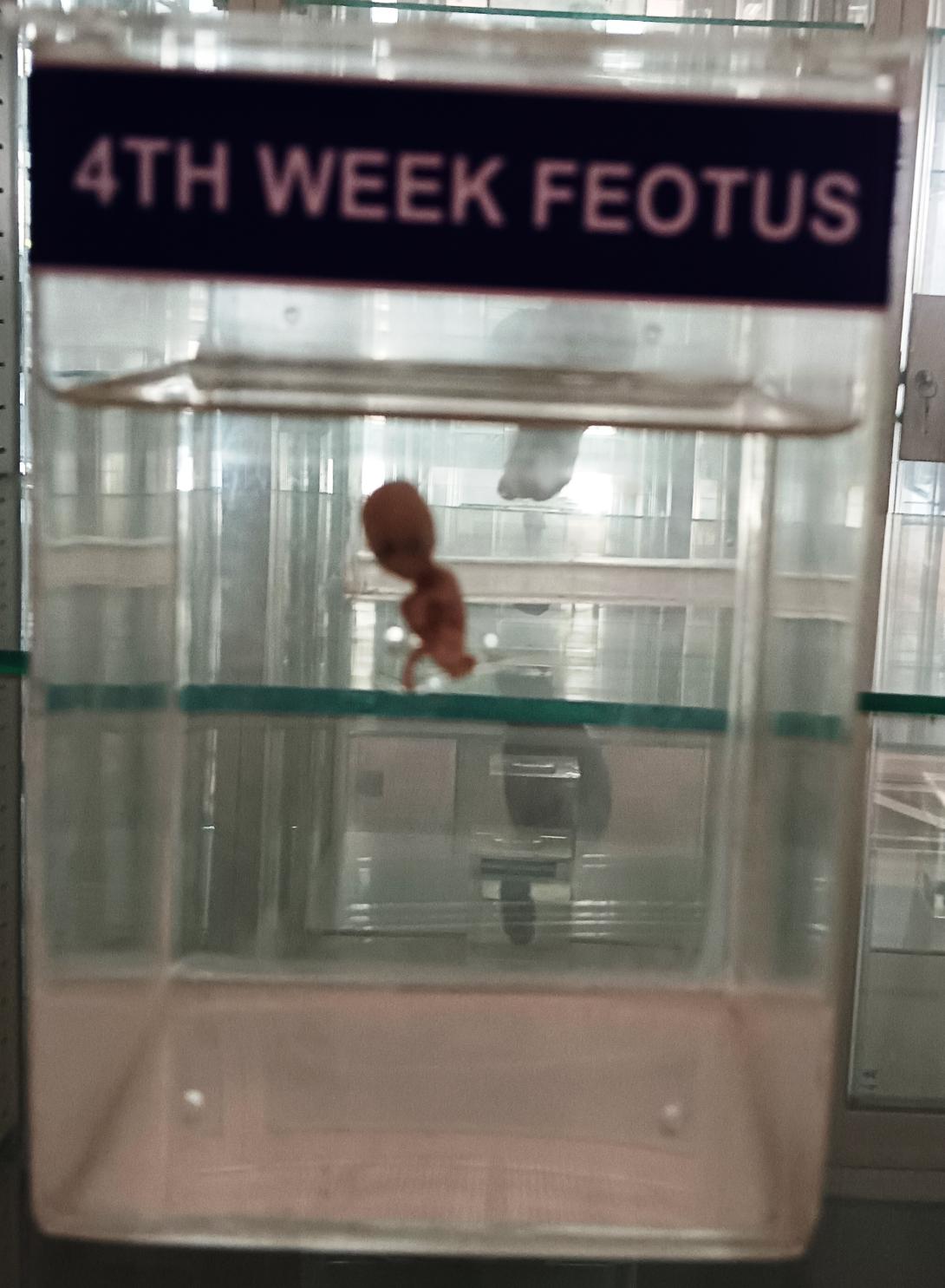During the fourth week of gestation, the embryo has developed into a blastocyst and has implanted into the uterine lining. The cells within the blastocyst will continue to differentiate into the various tissues and organs of the developing fetus.
At this stage, the neural tube begins to form, which will eventually become the brain and spinal cord. The heart also begins to form and will start to beat soon after. Other organs, such as the liver, pancreas, and lungs, begin to take shape.
The embryo is about 1/25 of an inch long and is still too small to be visible to the naked eye. It is surrounded by the amniotic sac, which will provide protection and cushioning for the developing fetus. The placenta, which will provide nutrients and oxygen to the fetus, also begins to form during this stage.
Overall, the fourth week is a crucial time in fetal development, as many of the major organs and structures begin to form.
A fetus or foetus (/ˈfiːtəs/; plural fetuses, feti, foetuses, or foeti) is the unborn offspring that develops from an animal embryo.[1] Following embryonic development the fetal stage of development takes place. In human prenatal development, fetal development begins from the ninth week after fertilization (or eleventh week gestational age) and continues until birth. Prenatal development is a continuum, with no clear defining feature distinguishing an embryo from a fetus. However, a fetus is characterized by the presence of all the major body organs, though they will not yet be fully developed and functional and some not yet situated in their final anatomical location.

